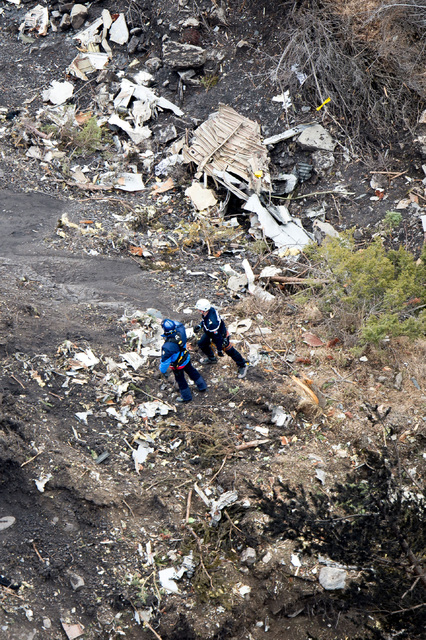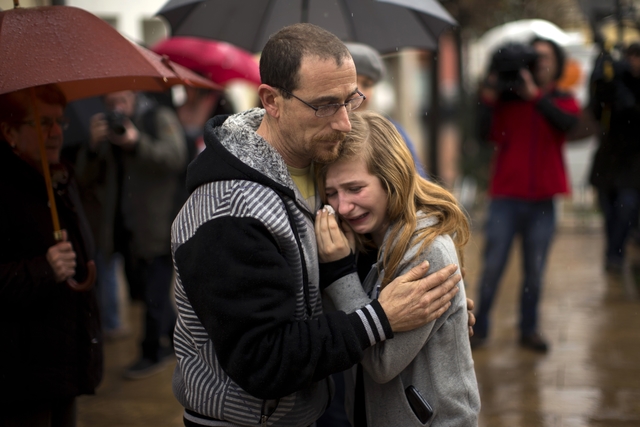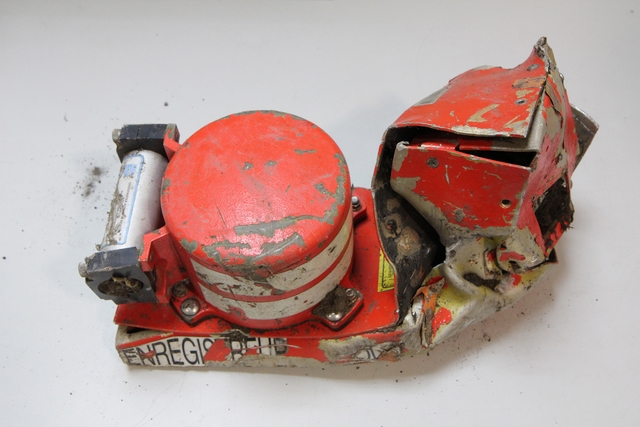SEYNE-LES-ALPES, France — The first half of Germanwings Flight 9525 was chilling in its normalcy. It took off from Barcelona en route to Duesseldorf, climbing up over the Mediterranean and turning over France. The last communication was a routine request
SEYNE-LES-ALPES, France — The first half of Germanwings Flight 9525 was chilling in its normalcy. It took off from Barcelona en route to Duesseldorf, climbing up over the Mediterranean and turning over France. The last communication was a routine request to continue on its route.
Minutes later, at 10:30 a.m. Tuesday, the Airbus A320 inexplicably began to descend. Within 10 minutes it had plunged from its cruising altitude of 38,000 feet to just over 6,000 feet and slammed into a remote mountainside.
To find out why, investigators have been analyzing the mangled black box that contains an audio recording from the cockpit. Remi Jouty, the head of France’s accident investigation bureau BEA, said Wednesday that it has yielded sounds and voices, but so far not the “slightest explanation” of why the plane crashed, killing all 150 on board.
A newspaper report, however, suggests the audio contains intriguing information at the least: One of the pilots is heard leaving the cockpit, then banging on the door with increasing urgency in an unsuccessful attempt to get back in.
Eventually, the newspaper quotes the investigator as saying: “You can hear he is trying to smash the door down.”
The investigator, whom the newspaper said could not be identified because the investigation is continuing, said officials don’t know why the pilot left. He also does not speculate on why the other pilot didn’t open the door or make contact with ground control before the crash.
French officials gave no details from the recording on Wednesday, insisting the cause of the crash remained a mystery. They said the descent was gradual enough to suggest the plane was under the control of its navigators.
Confusion surrounded the fate of the second black box. French President Francois Hollande said the casing of the flight data recorder had been found in the scattered debris, but was missing the memory card that captures 25 hours’ worth of information on the position and condition of almost every major part in a plane. Jouty refused to confirm the discovery.
French officials said terrorism appeared unlikely and Germany’s top security official said there was no evidence of foul play.
As authorities struggled to unravel the puzzle, Hollande, German Chancellor Angela Merkel and Spanish Prime Minister Mariano Rajoy converged on the remote accident site to pay their respects to the dead — mostly German and Spanish citizens among at least 17 nationalities.
“This is a true tragedy, and the visit here has shown us that,” Merkel said after she and Hollande overflew the desolate craggy mountainside.
Helicopters ferried in rescue workers and other personnel throughout the day. More than 600 rescue and security workers and aviation investigators were on site, French officials said.
Germanwings CEO Thomas Winkelmann said the airline was in the process of contacting victims’ families. He said the 144 passengers and six crew members included 72 Germans, 35 Spaniards, three Americans and two people each from Australia, Argentina, Iran, Venezuela, and one person each from Britain, the Netherlands, Colombia, Mexico, Japan, Denmark, Belgium and Israel.
The three Americans included a mother and daughter, the U.S. State Department said. Some of the victims may have had dual nationalities; Spain’s government said 51 citizens had died in the crash.
Two babies, two opera singers and 16 German high school students and their teachers returning from an exchange program in Spain were among those who lost their lives.
Germanwings canceled several flights Wednesday because some crews declared themselves unfit to fly after losing colleagues.





